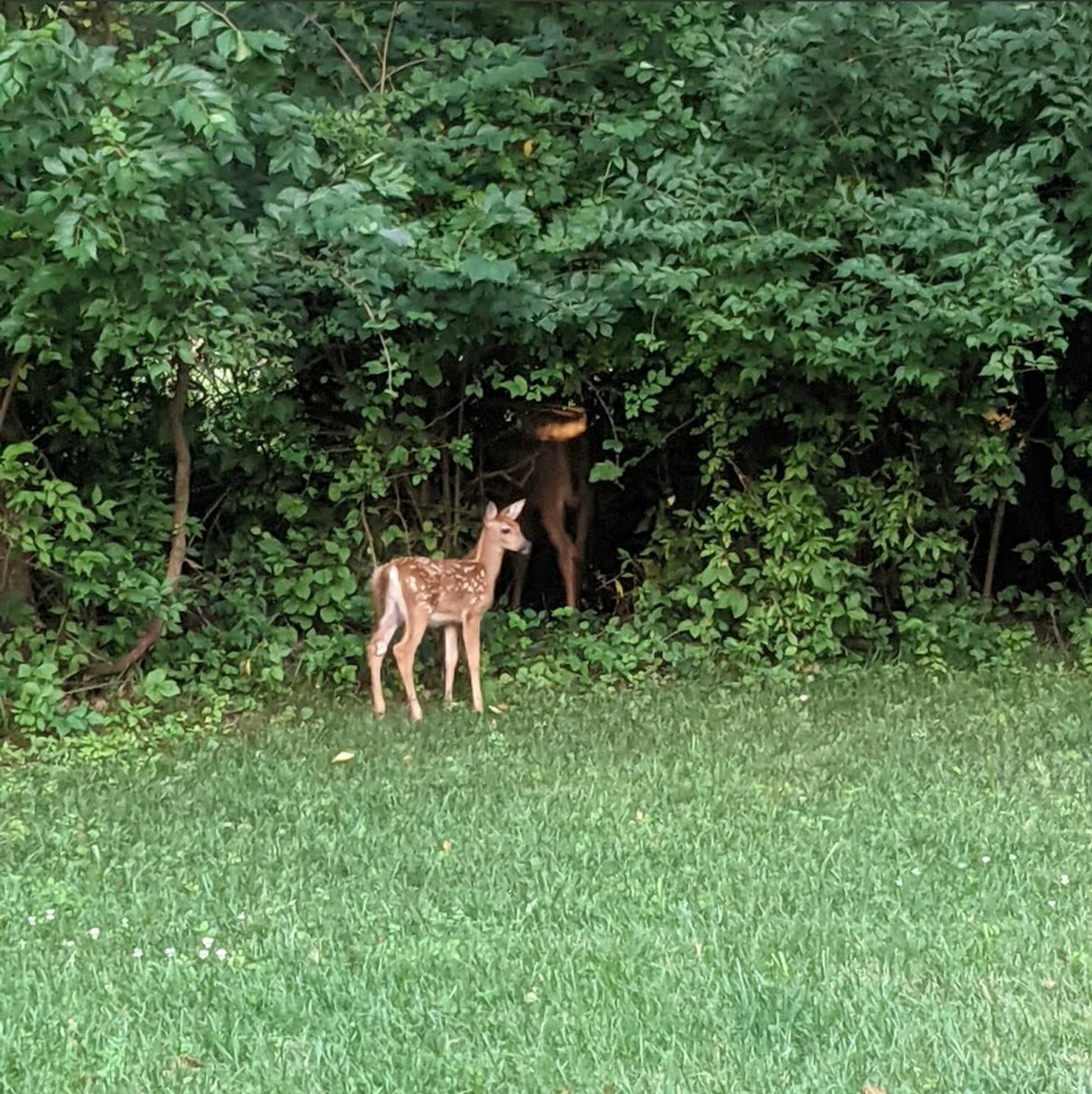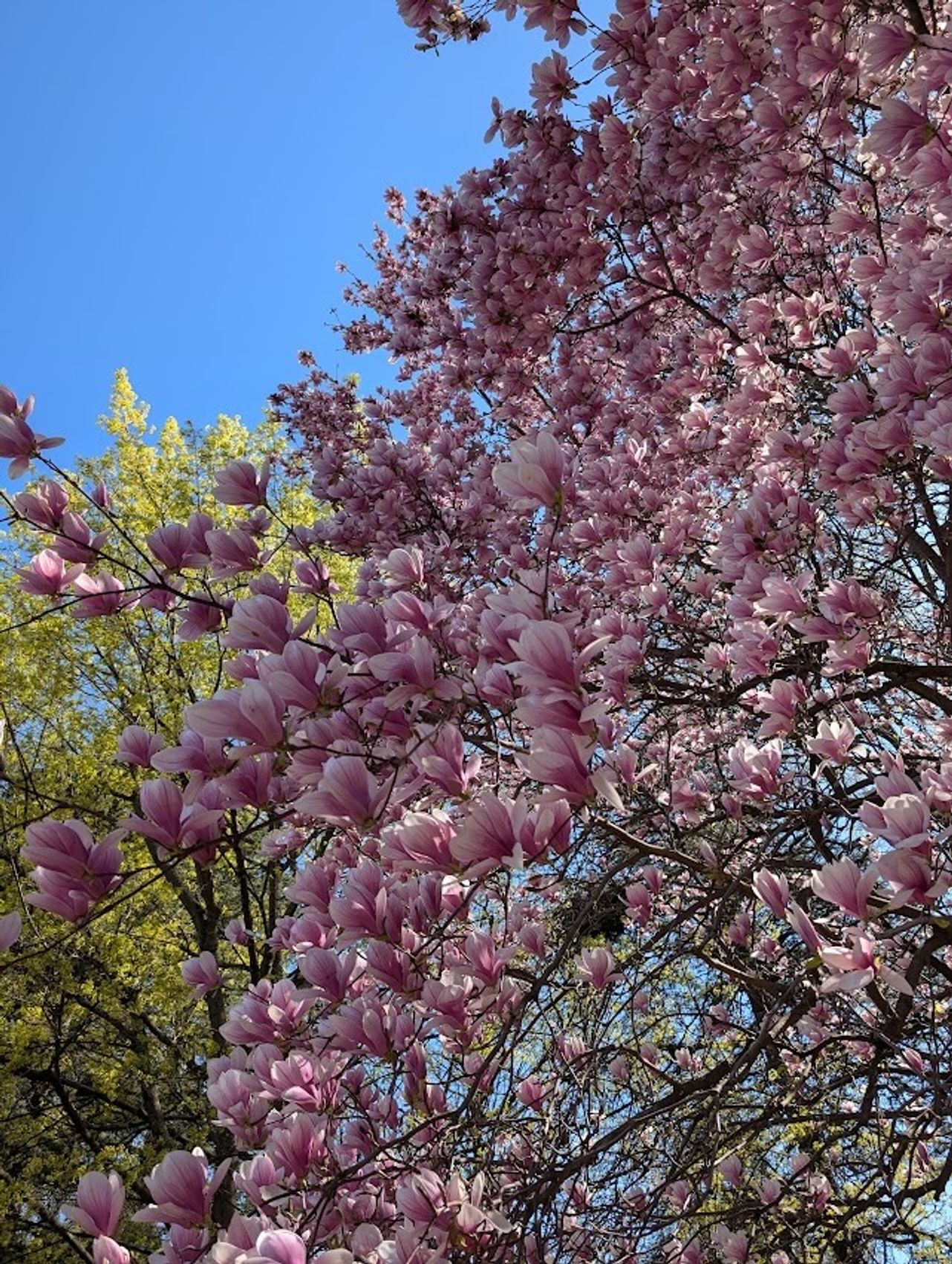Small Town Dispatches: Holly M. Wendt
by Holly M. WendtWelcome to Small Town Dispatches, a new feature on The Peak that recognizes the efforts of sustaining a writing practice in places with unconventional resources. Writing can be deeply isolating, especially when you live outside of cities that are seen as cultural epicenters. So here, Special Features Editor Nadeen Kharputly interviews Shenandoah contributors to gain insights about what it’s like to live in small towns (and towns that feel small): rural areas, college towns, islands, hamlets, and more.
Writer: Holly M. Wendt
Town: Annville, Pennsylvania
Bio: Holly M. Wendt is professor of English and creative writing and director of creative writing at Lebanon Valley College and the author of Heading North (Braddock Avenue Books, 2023). Wendt is a recipient of fellowships from the American Antiquarian Society, the Jentel Foundation, and the Hambidge Center. Their writing appears in Passages North, Barrelhouse, Shenandoah, The Rumpus, and elsewhere.

The koi pond
Tell us about your small town - how small is it?
The town that corresponds to my mailing address in central Pennsylvania has a population of around 4,500, and that population is augmented, during the school year, by the roughly 2,000 full-time students of the small liberal arts college located there, where I teach. It’s a one-stoplight town, and the college begins on the northeast edge of the stoplight square. The public library is on the main street, across from the fire department. There are three coffee shops, not counting the two kiosks on campus; one closes at 3 p.m., the other generally closes at 6 p.m., and the third is only open three days a week, from 7 a.m. to 11 a.m. and has nowhere to sit. There’s one dedicated local bar and one brew pub, plus the VFW and American Legion; we have two Vietnamese restaurants, a cafe for breakfast and lunch, a quintessential Pennsylvania sub shop/pizzeria, and a Subway. Two gas stations bracket the main intersection. On the main street, you’ll find a juice shop, a small health foods store, a walk-ins only barber and four salons, a furniture store, and two cabinetry businesses.
I live seven miles outside of town, where the nearest neighbors are the two donkeys that occupy the pasture behind our house. There are houses on either side of ours, but when the leaves are on the trees, both the houses and the donkeys are hidden.
What makes your town a unique place for your writing practice?
I am always thinking about work in my fiction and nonfiction: about what making is, what we do with our bodies and our minds, how we spend/value our time and what we call those various ways of using that time, as individuals and in our communities. I grew up working class, and this is very much a working-class place where the idea of work is often valorized for its own sake, which is complicated. The town used to be home to multiple factories and grain mills (now closed) and was ringed by farmland, which now exists only to the north and south of town. That said, the ethics of keeping busy and a tradition of DIY for everything from home repair to handcrafts persists. There’s also a tradition of beauty built into all of this, even in the most utilitarian or homely applications; some barns still bear their painted Pennsylvania Dutch hex signs and the local public libraries have knitting and crocheting groups that meet regularly. I’m a fiber artist who spins, knits, and weaves, and that practice is closely connected to how I think about my writing; this is a pretty good place to be interested in those things. I also grew up in a similar environment, not terribly far from here, and all of this fuels my writing angels and devils both.
Do you have a favorite writing spot?
To be honest, my favorite writing spot is my home office because I do most of my writing very early in the morning—before breakfast, before a shower, before it’s time to meet the world… and before any of the above-mentioned coffee shops open.
But sometimes, when I have rare open hours in my weekday afternoons, I sneak downtown to get a bubble tea from one of the Vietnamese restaurants to keep me company on a walk around campus. These little stolen walks are time for me to refresh the well, so to speak, an opportunity to separate myself from the screen and sharpen my attention on the details of the world. On campus, we have an idyllic little garden, complete with a koi pool and a stunning arbor of cherry trees, in the space between the academic buildings and the dorms. In the spring and fall, it’s absolutely magical, and that’s where I tend to take myself. It’s also a place where I’ve gathered with the student writing group to generate new writing.

"One of the back yard fawns (with mama stepping off into the woods behind)."
How do you build community with other writers or creatives in your town?
The best part of living where I live is that there is a vibrant creative community housed within the college. I have the privilege of teaching creative writing (among other things), so I quite literally get to be immersed in conversations about writing practice every day, and there are artists and librarians and musicians and historians and linguists and so on in the offices around the corner. That, alone—to be in a place where the kind of work we do is valued from colleague to colleague—is important to me.
As a department, we try very intentionally to build community through curricular and co-curricular means: a welcoming and well-inhabited student lounge, letterpress printing Fridays, plus the collaborative work of the literary magazine, student newspaper, and theater group. We also have a dynamic visiting writers series, which allows our community to expand in ways both short-term and long.
It’s a little more difficult to build community outside of campus. Teaching at a SLAC is especially encompassing—not only for the sheer amount of time we devote to teaching, advising, service, and responding to student writing, but also because it is a community, so nights and weekends often include going to watch my students and colleagues on the stage, on the field, at their instruments, or in their galleries. The nearest bookstore that regularly hosts readings and writing events is a forty-minute drive away. Still, because of those events, I have built a small, sweet community of like-minded teachers and writers whom I see at said events, and we’re able to commiserate and collaborate in those moments and in our online spaces. My own writing groups, which is to say those I exchange writing with, are more far-flung, and we have to do most of our convening through e-mail and Zoom.
What do you appreciate most about where you live?
Though I love to visit larger places for museums and events and especially for interesting food options, I’m very much a country mouse. The quiet here, especially where I actually live, is gorgeous. When the sun is starting to come up and I’m heating water for my second pot of tea, I’m likely to see a handful of deer grazing their way through the backyard or a pair of squirrels chasing each other through the fencerow. Crows strut and cavort in the driveway, much to the perturbation of my cat. For these minutes—maybe two whole hours on the best days—I can separate myself from our global anxiety and the eternal anchor of the to-do list and do as Annie Dillard admonishes in The Writing Life: “keep cranking the flywheel that turns the gears that spin the belt in the engine of belief that keeps you and your desk in midair” (11).

"In lieu of the cherry blossoms (which are only present for a few days), here are the campus magnolia trees in bloom (which are also magnificent)."
What are some of the challenges of living there?
At the small and personal level, the quiet also means isolation, and interrupting that isolation requires significant personal effort and/or expense. It’s hard to commit to almost two hours of just driving time to go to a weeknight reading off-campus, and I don’t do it as often as I wish I could. The ongoing complexities of higher education everywhere—expanding responsibilities, shrinking resources—mean there’s less time for those things (less time for everything, including my own writing and reading). So it’s always a tradeoff.
Writ larger, the rise of Trumpism has made this a less friendly, less welcoming place than once it was. It’s always been a conservative area—such is the nature of small town America—and it’s been a historically white one with all of the attendant baggage one would expect, but there are currents of outright hostility that feel different now. It’s a small measure of the thing, but the kinds of public declarations I see in flags and bumper stickers are more violent, more vulgar, more celebratory of a kind of cruelty that wouldn’t have been visibly embraced before—that weren’t visibly and audibly embraced when I was a kid. Students, colleagues, and residents of color, especially trans and gender nonconforming people, experience this much more materially than I do as a white person, and as a nonbinary person, I am aware of that weight, though I shoulder much less of it. And it makes that community building element all the more difficult: how do you create community in a deeply divided context?
Can you share any writing advice that's inspired by your living situation?
This is an answer that combines my living and working situation: it’s important to have a system of accountability for your writing, especially since I don’t have a regular writing group I have to look in the eye on a weekly basis. My accountability system is primarily my students. I can’t, in good conscience, tell them that if they want to be writers, they do actually have to write things, and they should (and should want to) support other writers in the practice, however they can, and then not do those things myself. Relatedly, this all also means that my motivation has to come from the self; there’s no significant sense of someone else waiting, with bated breath, for me to finish what I’m working on. That urgency has to come from within, which is an urgency I have to cultivate and tend, like a garden. But it can be cultivated, just like a writing practice, just like a community, even in a small, isolated place like this.
Is there anything else you’d like to share?
This place, like all places, is an imperfect one, but it’s the place I have, the place I am. I was raised a few miles outside an even smaller Pennsylvania town—just 383 people, according to the census in the year I graduated high school in a school district that still does not contain a single traffic signal—and I didn’t know anyone who was a writer when I was growing up. Aside from my K-12 teachers, the number of people I actually knew who’d gone to college fit on one hand. The person with the most visible career in “the arts” was the local florist. But my maternal grandmother, once she retired from working at a poultry processing plant, taught herself to paint from mail-order video courses, and she’d always quilted and crocheted. My paternal grandmother, who worked in a garment factory, sewed clothing for her own children and beautiful Halloween costumes that were passed from generation to generation. So even though I didn’t have much in the way of models for a life in creative writing, I certainly had models for a life of making and of diligent practice in my small-town world, which have served me well.